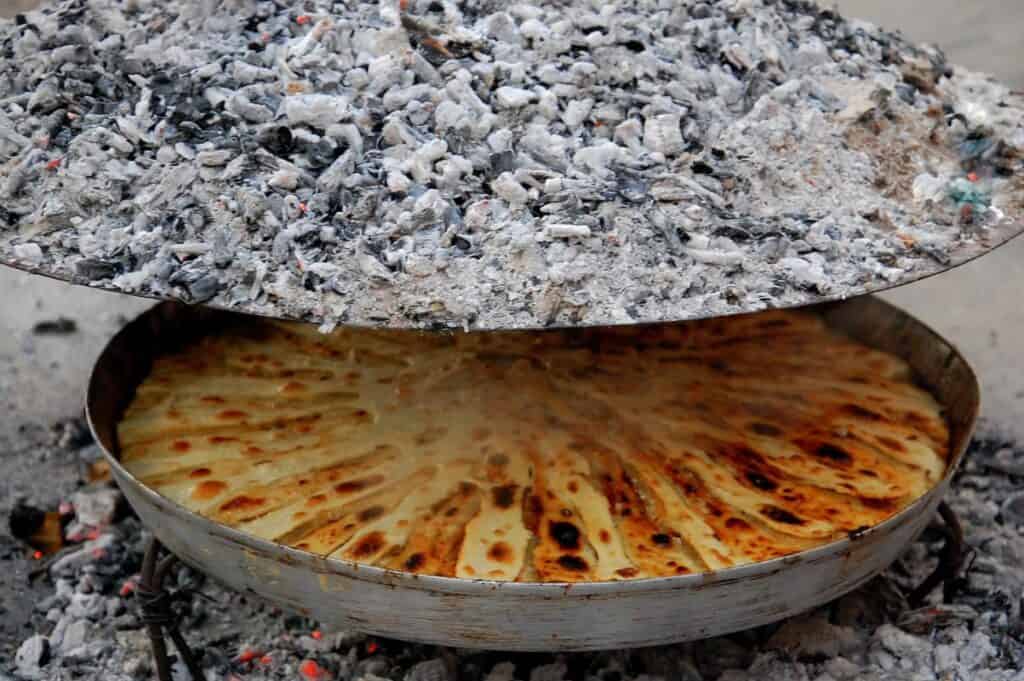Albanian cuisine is a delightful blend of flavors, traditions, and history. Among its many culinary treasures, Fli stands out as a unique dish that captures the soul of the country’s rural traditions. A staple in many Albanian households, Fli is more than just food—it’s a symbol of community, patience, and celebration.
What is Fli?
Fli (sometimes called Flija) is a layered savory dish made from a simple batter of flour, water, butter, and salt. While the ingredients are modest, the preparation process is an intricate ritual that reflects Albanian values of togetherness and hospitality.
This dish is traditionally cooked outdoors using a saç, a dome-shaped lid covered with hot embers, which gives it a unique smoky flavor. The process involves layering thin sheets of batter, one at a time, and cooking each layer before adding the next—a labor of love that can take hours to complete.
The Cultural Significance of Fli
Fli is more than a dish; it’s a culinary tradition passed down through generations. Often prepared during festive occasions, weddings, or family gatherings, it brings people together to celebrate life’s joys. The preparation itself is communal, with family members or neighbors gathering to share stories, laughter, and labor while tending to the slow-cooking masterpiece.
In rural Albania and Kosovo, Fli represents a connection to the land and its natural resources. It’s a dish that embodies simplicity, but its taste is anything but simple—rich, comforting, and deeply satisfying.
How to Serve and Enjoy Fli
Traditionally, Fli is served with sides that enhance its flavor:
- Yogurt or fresh cream adds a creamy, tangy balance to the dish.
- Pickled vegetables offer a sharp contrast to its buttery richness.
- A glass of homemade raki or local wine pairs wonderfully for those seeking a true Albanian dining experience.
While it’s often enjoyed as a main dish, Fli can also be a hearty accompaniment to grilled meats or fresh salads.
Modern Takes on Fli
Although traditionally cooked over an open fire, modern adaptations of Fli can be made using conventional ovens, making it accessible to home cooks worldwide. In urban areas, variations of the dish have emerged, with creative twists like adding herbs, cheese, or even sweet toppings for a dessert version.
Restaurants specializing in Albanian cuisine now serve Fli as a way to introduce visitors to the country’s rich culinary heritage.
Where to Try Fli
If you’re planning a trip to Albania or Kosovo, make sure to try authentic Fli in the following regions:
- The Rugova Valley in Kosovo, where Fli is a local favorite.
- Shkodra, Albania, is known for its rich culinary traditions.
- Traditional guesthouses or rural homestays often serve freshly prepared Fli, offering a glimpse into authentic Albanian life.
A Taste of Tradition
Fli is more than just a dish; it’s a connection to Albania’s past, a testament to its traditions, and a symbol of its warm hospitality. Whether you try it during a visit to the Balkans or make it at home, this dish is sure to leave a lasting impression on your taste buds and your heart.


